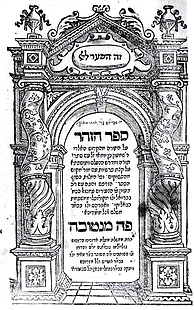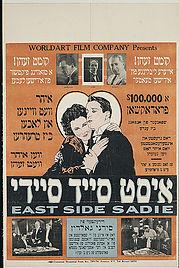Languages
BIBLICAL HEBREW
Biblical Hebrew, the language of the Jewish Bible and Christian Old Testament, was also the primary language of ancient Israel and Judah. It is closely related to other Semitic languages like Arabic, Aramaic, Syriac, Akkadian, and Ugaritic, offering insights into an ancient Semitic culture that has profoundly influenced religion, philosophy, literature, and Western practices. Additionally, it forms the foundation for various historical stages of Hebrew, including rabbinic, medieval, and modern Hebrew.
Studying Elementary Biblical Hebrew for a year enables students to read simple narrative texts from the Hebrew Bible, with the second year focusing on more complex passages, including prose narratives and poetic compositions like psalms and prophecies. Successful completion of two years of Biblical Hebrew fulfills the College of Arts & Sciences foreign language requirement.
The Hebrew Bible is a pivotal literary work in Western civilization, making it essential to read in its original language. Biblical Hebrew, characterized by its interpretive flexibility, unveils layers of meaning and insights lost in translation. It also reveals unique concepts and perspectives from ancient Israel's culture, distinct from the Greek philosophical traditions that dominate Western thought.

MODERN HEBREW
Shalom and welcome to Hebrew! Hebrew is the "sleeping beauty" of Semitic languages. For more than a thousand years, the Hebrew language had been sleeping (according to linguists, it was only daydreaming). But then, one day in the nineteenth century (so goes the legend), it was kissed by the crazy visioner Eliezer Ben Yehuda, and woke up to life.
One of the Hebrew Program's unique features is its emphasis on Hebrew for the long run, Hebrew for the real world. You will not only learn Hebrew, but also master the learning techniques that will render your knowledge sustainable, allowing your relationship with Hebrew to persist for years to come. For vocabulary, for instance, we will be using video clips, paintings, and also dozens of music clips from the internet and other sources, thereby making it easy to practice the language at home or on the road in the exact same way as in the classroom.
Assessment in the Hebrew Program is based on an innovative principle we like to call, "show what you know!" The idea is a simple one; in lieu of giving standard vocabulary quizzes or grammar tests, we ask that students demonstrate their knowledge by way of performing the same activities we conduct in class. In a typical vocabulary demonstration, for instance, you and a partner will need each in your own turn to demonstrate your familiarity with the vocabulary at hand, as well as its underlying grammar. When it is your turn to demonstrate your knowledge, your partner will ask leading questions and provide you with other helpful hints and tips (in Hebrew, of course), yet without giving away the answer, a la Pictionary.
Learning Hebrew is known to be addictive, but is also very rewarding! By learning Hebrew you will be joining a fast-growing, highly diverse speaker community and have doors opened to contemporary culture in Israel and Palestine, as well as to the language of the Bible. Already looking forward to learn Hebrew? me'tsu'yan! la'avoda!
YIDDISH

Once considered moribund, Yiddish, the language of Jews from Eastern and Central Europe, is alive and kicking across college campuses in the U.S. UVA's Jewish Studies Program, in cooperation with the German Department, has been in the vanguard of the Yiddish revival, though our Yiddish offerings are currently on pause.
Introductory courses in Yiddish began in 2002 for UVA students eager to explore the riches of Eastern European Jewish culture and history. In 2007, the offerings expanded to intermediate Yiddish for undergraduates, graduate students, and auditing professors. Hardly a week went by that students weren't "noshing" Eastern European Jewish delicacies such as "lokshn kugel" (noodle kugel) in class while mastering the intricacies of Yiddish grammar. Students would perform a medley of Yiddish songs in a holiday Channukah concert for a charitable cause and give themselves group names in Yiddish in honor of the occasion.
Please contact the Jewish Studies Program director at jlg2u@virginia.edu, if you are interested in learning Yiddish.